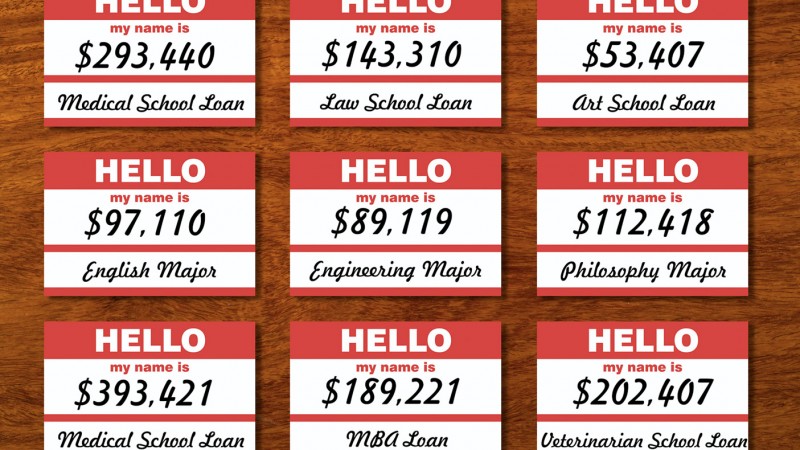Financing Higher Education
- Details
- Written by Remar Sutton
- Category: Articles

It's never too early or too late to start planning for your children's education after high school. The earlier you adopt a savings plan, the more options you have for building that nest egg to pay for college or vocational school.
The earlier you adopt a savings plan, the more options you have for building that nest egg to pay for college or vocational school.
But even if your child is approaching high school graduation, it's not too late to plan how best to use your resources. For example, in addition to savings, there are a number of lower-cost educational loan plans in which the parents or student may participate.
Savings Plans
Savings are a primary source for paying college or vocational school tuition and expenses. Savings plans can take many forms, and they can be started by a parent, child (or prospective student), relatives and friends. Here is an overview of a few of the many savings options, including the potential tax benefits or other benefits each may offer.
Coverdell Education Savings Accounts (formerly Education IRAs). These tax-free savings plans may be set up for a minor child to pay qualified education expenses for the designated beneficiary. A maximum of $2,000 each year can be contributed per year to the account up until the child reaches 18 years of age. Contributions are limited by the giver's modified adjusted gross income. The fund must be used to pay for qualified expenses by the time the beneficiary reaches age 30. Such "distributions" can be used to cover qualified expenses for both elementary/secondary education and higher education. The fact that the account must be in the child's name can affect the child's eligibility for financial aid.
State-sponsored 529 Plans. Every state in the U.S. offers at least one of these college savings programs, which are established in the name of the beneficiary and which provide tax-free growth. No federal income tax is owed when a distribution is made for the beneficiary's college costs. Although the plan is state sponsored, the funds may be used at any accredited college or university in the country. A 529 Plan has several benefits. First, it's an easy account to manage because the donor simply determines a monthly contribution; like a mutual fund, the investment is handled by the plan managers. Second, the maximum amount that can be saved is large. Although monthly contributions can be as small as $50 per month, the total amounts that can be contributed can be large, as much as $200,000 or more per beneficiary in some states. Also, there are no income or age restrictions. The College Savings Plans Network has information about each state plan.
Education Bond Program. This US Treasury Department program allows interest to be completely or partially excluded from Federal income tax. The bond owner must pay tuition and fees at a college, university, or vocational school or pay into a State tuition plan in the same calendar year that the bonds are redeemed. Series EE bonds issued after January 1990 and all Series I bonds are eligible. You don't need to indicate that you plan to use the bonds for education when you buy them but you must meet the program requirements. For more information about these bonds, check out the Education Planning web page of the TreasuryDirect site.
Prepaid Tuition Plans. These are state-sponsored college savings plans that allow you to buy tuition units. This means that if you buy units for one semester (or quarter) now, the units will still pay for one semester (or quarter) when your child goes to college. Previously, these plans locked you into state schools but with the advent of the 529 plans, there is a little more flexibility.
Scholarships, Grants, Loans and Other Financial Aid Options
With higher education costs continuing to rise, most families will need more than savings to finance a child's continuing education. According to college admissions professionals, many families mistakenly assume when their child applies to colleges that they can't qualify for financial aid. These experts strongly recommend that every applicant and his or her family always complete the financial aid application. Financial Aid Offices in most colleges and universities are happy to work with prospective students to put together a package of aid that draws on not only on scholarships and the institutions private resources but on government grants and loans and other outside resources.
FAFSA: Free Application for Federal Student Aid …and more
The U.S. government provides a number of grant and loan programs to help finance higher education. To apply for any federal aid program, prospective students and their families must submit the Free Application for Federal Student Aid (FAFSA), which is used to determine what federal aid a student may be eligible for. Most schools also require that applicants for financial aid complete this form.
Many colleges also use the federal FAFSA form as part of the financial application process not just to qualify students for federal grants and loans but for their own scholarship and financial aid programs.
There is no fee to file the FAFSA. It must be filed only once and preferably should be submitted online (over 90% of FAFSA applications are submitted online). The FAFSA website also provides information and aids for completing the form. If you prefer using paper forms (a much slower process), such forms are available from the Financial Aid Office of individual schools and from the Federal Student Aid Information Center 1-800-4-FED-AID (1-800-433-3243) or 319-337-5665; TTY 1-800-730-8913.
Scholarships
Scholarships come to mind first when thinking about financial aid for higher education. Several billion dollars are available annually in scholarship funds from a wide variety of sources. Conducting an online search is probably the best way to locate scholarships, particularly those offered by groups and institutions other than colleges and universities. An excellent and easy-to-use website, FinAid! provides a guide to Financial Aid including links to several scholarship search sites. College loan giant Sallie Mae Inc. in their College Planning section of their website has information about scholarships including a scholarship search function.
U.S. Government Financial Aid Programs
Federal financial aid programs include the following grants and loans. Some programs are applied for through the individual school and others may be applied for directly. But it's important to note that an individual school may not participate in all the programs—another reason to work with the school's Financial Aid Office. Note: As of July 1, 2010 federal student loans will no longer be made by private lenders. All new federal student loans will come directly from the U.S. Department of Education Direct Loan program.
Federal Pell Grants
This program provides grants that do not have to be repaid. They are available for undergraduates only. Applications are submitted through the individual school.Federal Stafford Loans
These loans are available to undergraduate and graduate students, and loan eligibility increases for each subsequent year of study. Stafford loans may be obtained directly from the federal. The federal government guarantees the loan funds. Unsubsidized Stafford loans have a fixed interest rate of 6.8%. Subsidized loans have a fixed interest rate of 5.6%. If you qualify for a subsidized Stafford loan, the government will pay the interest on your loan while you are in school. If you have an unsubsidized Stafford loan, you are responsible for paying all the interest that accrues. The school or lending institution determines whether you qualify for subsidized or unsubsidized loan based on financial status. An individual who receives a subsidized loan may also get an unsubsidized loan.Federal PLUS Loans
These unsubsidized loans are made to parents by the U.S. Department of Education Direct Loan Program. The interest rate for these loans is fixed at 7.90%.Federal Supplemental Educational Opportunity Grants (SEOG)
These grants, which do not have to be repaid, range from $100 to $4,000 per year for students who remain eligible and are only available for undergraduates. The participating school administers the program and receives the application.Federal Work Study
This program provides jobs for undergraduate and graduate students. The money earned is applied to education expenses. The participating school administers the program and receives the application.Perkins Loans
These are low interest (5% APR) loans administered by the individual school. Undergraduates can borrow up to $5,500 annually and graduate students can borrow up to $8,000 annually.
For additional information about federal programs, you may wish to consult "Do You Need Money for College? The Guide to Federal Student Aid," a publication prepared by the government and available online.
Information on Other Sources of Financial Aid
Beyond the basic sources of financial aid described in this article, there are many other options. Sources of financial aid run the gamut from free scholarship lotteries, to aid from your specific school, to national service, to meeting specific criteria (such as female, older, minority). Check out the FinAid! web site for more information.


































